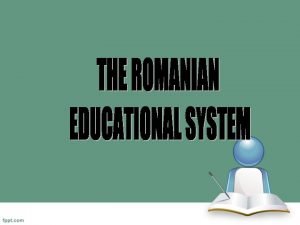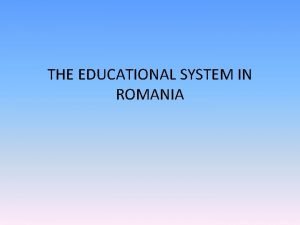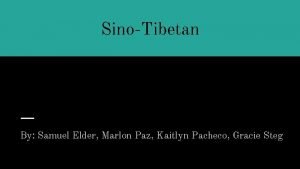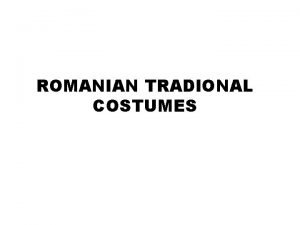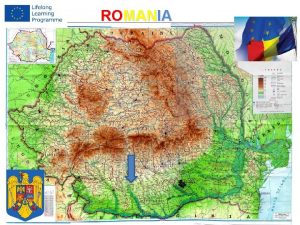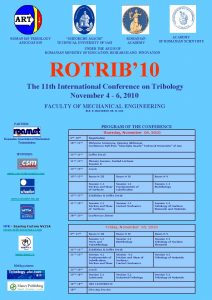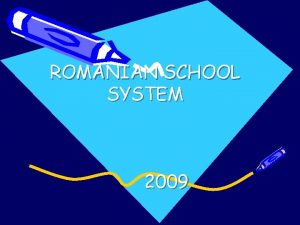THE ROMANIAN EDUCATIONAL SYSTEM General presentation The Romanian









- Slides: 9

THE ROMANIAN EDUCATIONAL SYSTEM

General presentation The Romanian educational system consists of four levels of studies: § Kindergarten § Primary school § Secondary school § Higher education

Kindergarten • The kindergarten level is an optional one and is available for children as young as three years old until they reach six. The level is divided into three. • Kindergarten classes include optional foreign language teaching (usually German or English) and lessons in dancing, swimming and other physical exercises. All kindergarten schools provide at least one snack or meal for their students. Some kindergartens have their own kitchens with cooks preparing the meals.

Elementary or Primary School • Elementary school or primary school is the first compulsory educational level in Romania. Students usually enter primary school at the age of six. • Each elementary class can accommodate up to thirty students, but twenty – five per class is considered as optimum. Some schools only have one class per grade, while some can reach as twenty per grade.

Elementary School Life • Most subjects for the first four years are taught by just one teacher, with additional teachers assigned only for some specialized subjects (foreign languages, sports, computers). So, a student will basically have one main teacher for his first four years of school. Primary subjects include Math, Romanian Language, History, Geography, Science, Art, Introduction to computers, Religion, Music, Physical Education and Civic Education. • Upper level students (fifth grade onwards) have additional subjects and may have around thirty to thirty-two hours of class per week. Additional subjects include Biology, Physics, Chemistry, Latin and Technology. Some subjects, like Religion and Technology may now be optional. Some schools may also add one or two subjects depending on their choice.

High Schools • High school comprises four years of studies, with two compulsory year levels (9 th and 10 th grade) and two noncompulsory levels (11 th and 12 th grade). • The National are the top high schools in Romania. Most of these schools are over 100 years old and are traditionally strong when it comes to education. • There are three Military colleges run by the Romanian Army. These high schools usually follow the same methods as army units, so they are basically very strict. Students are considered as members of the army, and therefore should abide by rules and regulations set by the army. • An Economic or Technical College (Colegui Economic or Tehnic) is a high school that is based on technical services.

High School Life • High school students follow rules and regulations similar to elementary school. Some schools have uniforms, but are only usually worn on special occasions. Grades depend on the school or the teacher of the level, so comparing grades and averages for different schools is not possible. Most high schools have at least two principals or directors. • Graduating high school students are required to take the National Baccalaureate Exam. This examination involves three oral exams and three written exams. Exams are usually held late June and September. Application for the examinations are usually done during the month of May.

Admission to Universities While there is a National Baccalaureate Examination done near or at the end of high school, the results of these exam play a very little role in university admission. The admission process completely depends on each university. Most universities have an admission exam, but have also begun to implement other assessment methods such as essays and interviews in order to better assess a student's actual performance.

University level studies • The first stage of university-level study comprises short-term (3 years) or long-term diplomas (4 to 6 years, according to the field of study). • The second stage is composed of diplomas awarded after one to two years of studies which may include research work. • Ph. D in Romania is the highest postgraduate stage of professional specialization and lasts for 4 - 6 years. Ph. D studies can be carried out either in full-time courses (up to four years) or in extra-mural courses (up to six years).
